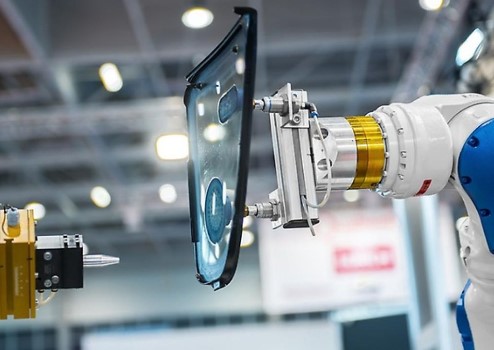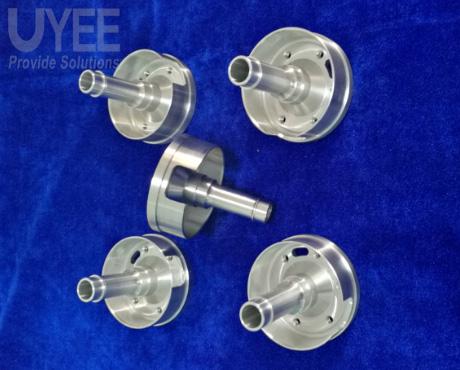Manufacturing Robot Mechanical Prototypes – What To Expect?
Robotics presents an opportunity to incorporate a revolutionary technological force that can help transform daily lives in various ways, from surgical robots to self-driving cars. For complex tasks, robots need an ever-increasing number of sensors and actuators to perceive the environment and more efficient complex algorithms running on the latest embedded processors.
How manufacturing Robot mechanical prototypes helps?
However, as engineers and scientists develop more capable robots, handling machine complexity becomes a dangerous proposition. As a result, developers are getting compelled to build new methodologies to help mitigate the risk associated with complex and novel designs. One such method is to create early-stage prototypes, which can help minimize the risk of developing robotic applications.

Here are five things to expect when you are prototyping the next mechanical robot:
-
Ideas are Cheap
With the Internet, we can now spread ideas more quickly and cheaply than at any other point in history. Technologies such as YouTube and Twitter reduce the expense and time involved in applying a view to almost zero. The most expensive aspect of developing a new robotic device is not coming up with the concept but deciding if the idea has any economic benefit.
You will offer potential customers and investors a specific concept by developing a robot prototype. It gives you a forum to seek input and evaluate whether the idea has commercial value, challenging when a concept only exists on a whiteboard or technical specification paper. Engineers at Virginia Tech University, for example, were able to create a semi-autonomous vehicle that allows a blind driver to navigate successfully, regulate speed, and avoid collisions through a secure driving course. They were able to successfully test their theories in the real world by designing the robotic system.
-
Don’t Optimize for Cost
Engineers get tempted always to seek the easiest and most elegant solution. It is an admirable and essential characteristic to have when designing the final customer-facing robot. It is not always ideal when developing a prototype device. When creating an electromechanical device, one potential pitfall is getting caught up in ongoing cost optimization when choosing processors, memory, sensors, and motors.
All while attempting to get as much output out of each of these subsystems as possible. The same can get said for the software engineers on staff, who continually improve and optimize code, causing deadlines to slip. This optimization method can also become a massive time drain at the start of a project when it is critical to verify whether it is feasible and economically viable. Before the developers can demonstrate what they’ve been working on, several programs run out of funds and time.
Although price is an important consideration, the prototype’s target is to build a framework within striking distance of profitability. The robotics team should concentrate on developing a framework that demonstrates the importance of the robot. Setting this as your performance metric will enable your team to show off your technology to the public before you run out of funds. Once consumers and investors are involved and supportive, the team will optimize the design to create a successful and effective system.

-
Reconfigurable I/O
Sensors and actuators enable a robot to interact with and control its surroundings. Unfortunately, at the start of the design process, it is nearly impossible to know all of the information about the system’s inputs and outputs, such as what voltage levels get expected, sampling rates, the number of input channels, and the number of digital lines, to name a few. Integrating I/O into your Custom machined parts is critical in developing a fully functional device.
Engineers demonstrate that their concept can get applied in the real world by including sensory input and control output. Making a paper template, implementing it in software, and even simulating it in a virtual world are essentially conceptual exercises. For the value of your concept, the prototype must collect data and respond accordingly. Furthermore, data from prototyping operations aid in the refinement of functional criteria with customers and the rest of the team based on actual performance.
Adopting a prototyping program that enables engineers to switch out I/O and experiment with different combinations quickly helps the robot be versatile and adapt. They learn more about the problem they’re attempting to solve. It allows you to prompt a robot swiftly to communicate with the natural world while retaining the versatility to adapt as required.
-
Design for Reuse
One goal of themachined parts is to progress to a subsequent design, either more optimized and similar to the final product or integrating customer input. In any case, the engineering team must determine which components will get included in the subsequent design iteration. Extra attention must be paid to these elements, whether they are a communication protocol or a software algorithm, to ensure that their interfaces and implementations are as compact as possible in the next step of development. It includes providing compatible interfaces, decoupling modules, and maintaining a modular design.
When selecting tools for Custom CNC parts, it is critical to consider whether these tools provide a forum that allows engineers and scientists to build the system at the necessary volume and a possible price point.
-
Demonstrate Your Prototype
Your Robot Prototyping should be simple to show. This prototype will serve as your calling card–the first thing clients, venture capitalists, and future employees notice about you. A simple prototype that quickly demonstrates what distinguishes the product is the perfect way to create positive excitement about the business and robot. Display the demo as soon as possible while pitching your idea. A powerful presentation will do much more for your company and product than simply displaying slides on a projector.
Conclusion
Organizations and engineers profit from prototyping because it provides early insight into the design process while also involving potential clients, buyers, and investors. We hope these pointers will help you know what you can expect from your next mechanical robot prototype.
